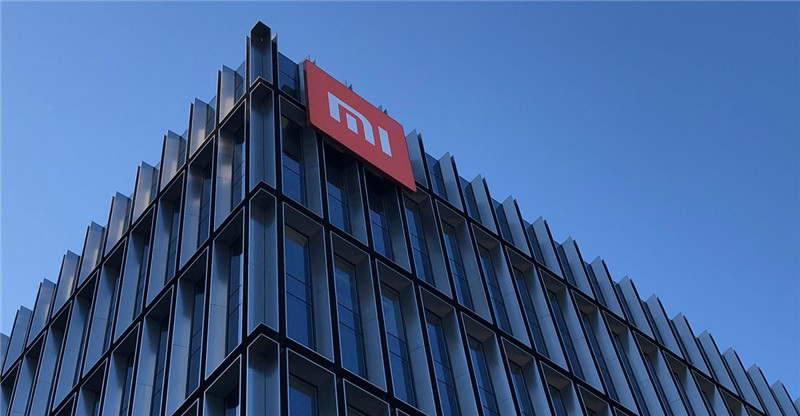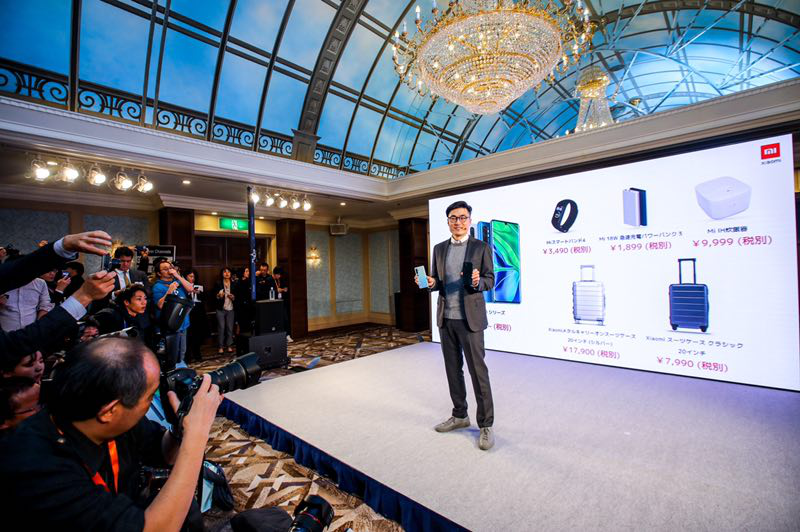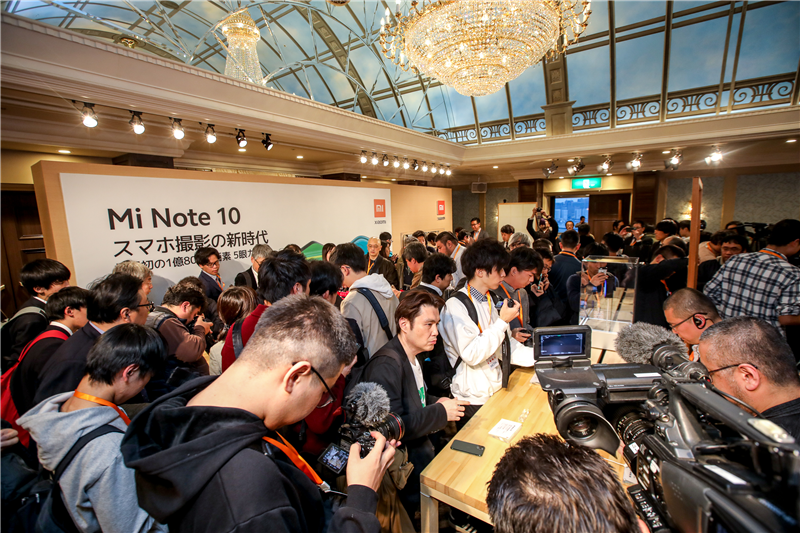Xiaomi enters the Japanese market

Xiaomi crossed the Nuggets to Japan, and the MUJI from the technology industry finally went to Japan. At 2 pm in the country last Monday, Xiaomi entered Japan and held its first press conference in Tokyo, releasing the first batch of products that were put into the Japanese market. When first entering Japan, Xiaomi did not choose to sing aggressively, but first invested in 5 products to test the water. On-site spokesman Wang Shihao, regional general manager of Xiaomi East Asia, said that Japan is a special market and needs to be highly customized, and will gradually introduce more products in the future. These 5 products are both mobile phones and IoT devices. They are the Xiaomi Mi Note 10 series, Xiaomi Mi Band 4, Xiaomi Power Bank 3, IH rice cookers and luggage under the Mijia brand. The mobile phone Note 10 series was pre-sale on Amazon Japan's website on the same day. Wang Shihao declined to comment on the layout of the offline brand store Mi Store in Japan.
In order to make Japanese consumers pay, the words "innovation" and "cost-effective" were repeatedly mentioned at the press conference. Note 10 series 6GB + 128GB versions are priced at 52,800 yen (approximately 3,422 yuan) and rice cookers are 9999 yen (approximately 648 yuan). Although these prices are higher than domestic prices, according to a 36Kr Japan reporter's on-site observation, the price still attracted the scene. Media and VIP applause and marvel. Xiaomi, originally scheduled to enter Japan in 2020, has advanced its schedule. According to Wang Shihao, on the one hand, it wants to grab the commercialization of 5G in Japan next year, and on the other hand, Xiaomi believes that its extreme cost-effective model will bring great changes to the Japanese market. Wang Shihao also mentioned a detail. In the recent live broadcast of Mix Alpha released by Xiaomi, although the Chinese and English bilingual instead of Japanese was used in the live broadcast, Japan has adopted a concept machine with a surround screen design at this price as high as RMB 19,999. Of live broadcasts rank among the top five countries in terms of ratings. The implication is that Japanese consumers are not only willing to embrace new technologies, but also enthusiastic about Xiaomi's products.
Entering Japan is a continuation of Xiaomi's internationalization strategy. Since 2014, Xiaomi has expanded its global footprint. According to the presentation at the press conference, Xiaomi's products currently cover 90+ countries and regions worldwide, and rank among the top five in smartphone market share in 42 countries and regions, including Europe, India, Southeast Asia, etc. The Indian market has become the largest market for Xiaomi. The business in the international market has also become an important pillar of Xiaomi's revenue. According to the recently released 2019Q3 financial report, the overall revenue of Xiaomi's overseas market was 26.1 billion yuan, a year-on-year increase of 17.2% and accounting for 48.7% of the total revenue. Under the blessing of the internationalization strategy, according to market research agency Canalys, Xiaomi's shipments in Q3 2019 ranked fourth in the global smartphone market. However, Xiaomi has not had a good time in China recently. In the third quarter China (mainland market) smartphone market statistics report released by Canalys, the top five manufacturers with market share, except Huawei, Vivo, OPPO, Xiaomi and Apple all faced a bleak decline in shipments of more than 10% over the same period. Performance. Due to the tremendous pressure released by the international environment, Huawei has launched the "Cross the River Campaign" in China in May this year. Huawei's consumer business CEO Yu Chengdong has publicly stated that this year's goal is to sell one of every two mobile phones sold to Huawei. . This means that in China's mobile phone market share, Huawei strives to exceed 50%, and Huawei's current market share has reached more than 40%. Under the strong squeeze of Huawei, Xiaomi's shipments plummeted 33% year-on-year, and its domestic market share also dropped from 13% to 9% in the same period last year.

Entering Japan at this time, Xiaomi may be a country that expects to provide more than 30 million smartphone shipments in a year. However, this Internet company that claims to be a MUJI in the technology industry, is good at Internet marketing, and its products are mainly cost-effective. Can it open up a new world in Japan? According to Santander's analysis of Japanese consumer behavior, Japanese consumers tend to consume quality rather than mass consumption, and with the decline of the Japanese economy, consumers are more inclined to pursue cost-effective products. In the past ten years, Japan ’s GDP economy has not grown by more than 2% per year. According to the latest data released by the Japanese Cabinet Office, GDP growth in the third quarter of this year was only 0.2%, which was 1.6 percentage points lower than the second quarter, far lower than market expectations. . At the same time, Japanese consumers are open to international brands and have a strong willingness to try new products. As Wang Shihao said at the press conference, Japanese consumers are more willing to accept new technologies.
A good product that “touches the heart and is kind” is a flag Xiaomi wants to raise in the Japanese market. The "5%" commitment was also emphasized again at the press conference, that is, "the comprehensive net profit of Xiaomi hardware will never exceed 5%". In order for Japanese consumers to pay the bill, Xiaomi's selection of the first batch of products to enter the Japanese market was obviously carefully selected. Launched the Note 10 flagship machine that showcases its quality and innovation. The five cameras and 108 million pixels configuration demonstrate the high quality of its friends, and the price is almost half of the models compared, including Sony Xperia 5, iPhone 11 Pro Max and Samsung's Galaxy Note 10+. IoT devices are another card that Xiaomi plays in the Japanese market. At the beginning of the year, Xiaomi established a "mobile phone + AIoT" dual-engine strategy. This year's Q3 financial report shows that Xiaomi's IoT and consumer products' revenue has accounted for 29% of total revenue, and it has grown rapidly with an increase of 44.4%.
The Xiaomi Mi Band 4 introduced in Japan is one of Xiaomi's most popular wearable devices in the market. It once set a record of selling over 1 million units in 8 days. The IH rice cooker itself was designed by "Father of Japan's Fourth Generation Rice Cooker", former Sanyo Rice Cooker Business Development Minister Naito, and when the product was first launched in 2016, Naito declared that "I want to make the best rice cooker before selling Go to Japan. " This time, Xiaomi's rice cookers are really sold in Japan. Interestingly, Xiaomi is not the first company in the Japanese market to focus on cost-effectiveness and want to build an IoT ecosystem. In 2015, a consumer electronics startup, UPQ, appeared in Tokyo. It has launched more than 20 electronic products including mobile phones, sports cameras, powered suitcases, etc. in two months. Although it is not large, it is like Xiaomi. Similarly, instead of producing home appliances themselves, they are outsourced, emphasizing simple design from the user's point of view, strong practicality and low price, known as "Japanese millet".
UPQ CEO Nakazawa's products are also "born for fever". This young entrepreneur who worked for Casio Electronics once said in an interview that "it is a passion for manufacturing home appliances from the bottom of my heart. Consumer electronics in Japan are complex and expensive , So I want to make simple and interesting products that can activate a new model of Japanese manufacturing. " However, UPQ's weight in Japan is not large, and due to quality issues such as cell phone batteries catching fire, local consumers have questioned. This time Xiaomi's entry in China, under the banner of high quality and low price, will it really bring huge changes to the Japanese market as it says?
If the size of the Japanese smartphone market is dwarfed by that of China. Data show that Japan shipped 32.5 million smartphones in 2018, and the overall shipment was slightly lower than Indonesia, which was roughly one-third of China's in a quarter. Japan ’s smartphone shipments are also declining, down 1.9% from 2017. At the same time, when the industry refers to the Japanese smartphone market, the words "swamp", "isolated island", and "dead land" are used to describe the Japanese market's difficulty in breaking. Since 2012, the iPhone has been the king of the Japanese mobile phone market. According to Canalys' statistics on Japanese smartphone shipments in 2018, Apple's market share has exceeded 50%, and the remaining less than half of the market share has been occupied by Sharp, Sony, Samsung and Kyocera and other divisions, but none of these manufacturers' share exceeds 10%. Japan is also the cheapest country for Apple phones in Asia. Take the recently launched iPhone 11 (64GB) as an example. India's most expensive is $ 906, but the price in Japan is $ 693, which is almost one-third lower than India (China It sells for $ 778).
The success of the iPhone in Japan and the cheap price of mobile phone terminals are highly related to the sales model of Japanese mobile phones. Unlike Chinese e-commerce platforms, which account for almost one-third of smartphone sales, communication operators play a significant role in the Japanese mobile phone market. In addition to controlling mobile phone sales channels, manufacturers can even be required to change the embedded functions of mobile phone terminals. Relevant data show that Japan's three major telecommunications operators NTT Docomo, KDDI, and Softbank control almost 90% of Japan's mobile phone market. In this case, consumers mostly buy mobile phones through the operator's contract machine package. Communication operators will subsidize the price of mobile phones, making mobile phones cheaper, but the communication costs are expensive and there is a contract period. This is equivalent to the way users buy mobile phones in stages, which is conducive to the promotion of expensive mobile phones. It is precisely because of this favorable existence that Apple has entered the Japanese market in cooperation with Softbank since 2008, and later successively captured NTT Docomo and KDDI, occupying a strong sales channel.
Now this closed market is ripped apart. Because of the high cost of wireless communication and its continuous rise, it accounts for an increasing proportion of total household expenditure in Japan. It even reached 4.2% last year. In order to stimulate consumption and break the monopoly of telecommunications companies, the Japanese government requires communication operators to separate operator packages from the cost of mobile phones. The upper limit of mobile phone price subsidies is limited to 20,000 yen (about 1293 yuan) in an effort to reduce communication fees. The three major telecommunications operators have released this bundled sales as required. The implementation of this measure will inevitably impact the sales of high-end models in Japan, and users may therefore prefer cheaper smartphones.
Market observers at The Japan Times commented that Xiaomi's trip was to rob Japanese consumers who had been conquered by the iPhone, but it was a difficult battle. Xiaomi is clearly seeing a turn in policy and an opportunity to attack Apple. However, on the sales channel, Xiaomi has not disclosed more information about cooperation with operators and whether to open stores offline. Chinese mobile phone makers have been trying to get a share of the Japanese market with the image of "high cost performance and main camera". Both Huawei and OPPO entered the Japanese mobile phone market in 2018. Huawei's main products include the high-end line, the Mate series and the P series, which are mainly for business and fashion, and the Nova series, which are mainly aimed at young people in the mid-range model. When Huawei first entered Japan, it adopted a bare metal sales method. In order to further expand its market share, it has now transitioned to cooperation with operators. For example, Huawei's P30 Pro model is exclusively sold by NTT Docomo and cannot be bought by other operators in Japan. Therefore, it has achieved the world's lowest selling price with a tax-included price of only 59,616 yen (about 3,752 yuan).
OPPO's products for Japan also promote mid-to-high-end products, including the popular R series and the FindX series. OPPO's first product, the R11s, launched in Japan, emphasizing its camera function. With the suspension of the R series in April this year, the Reno series also entered the Japanese market. The FindX, which uses a curved panoramic screen design, is OPPO's flagship machine, taking the high-end line that costs 111,880 yen (about 7242 yuan). OPPO's usual celebrity marketing method was also brought to Japan, signing the endorsement of Sashihara Rino, a Japanese national girl idol group AKB48. Xiaomi in Japan is not only facing the existing iPhone, but also changing the battlefield to fight with Chinese mobile phones. Lei Jun once said that globalization should be a long-term plan for 10 or 20 years, and each market should do it one by one. However, it was only after Xiaomi entered more than 90 countries and regions that it came to Japan. It is hard to say that this is a market that can be easily captured.

AIoT is the other leg of Xiaomi's "Mobile Phone + AIoT" strategy, but AIoT is actually two parts: AI and IoT. The core purpose of "3 · 7 adjustment" is to add an AIoT Strategy Committee under the Group Technical Committee, which is responsible for Synergy of related business and technical departments. The chairman of the AIoT Strategy Committee is Fan Dian, the general manager of the IoT. Ye Hangjun, the general manager of the artificial intelligence department, is the vice chairman. He was one of the first 13 employees of Xiaomi. In an internal letter issued by Lei Jun the day before last year's listing, he thanked the nine founding team members one by one. The first one was Fan Dian. The AIoT strategy committee has a very large lineup, bringing together the heads of the ecological chain department, the Internet one or three departments, the intelligent hardware department, the television department, the notebook computer department, the e-commerce department, the sales operation department, and the mobile department. From the perspective of the personnel's department, Cui Baoqiu can directly participate in decision-making, and relevant technical personnel can coordinate closely with other functional departments to open the administrative barriers of various ministries.
Fan Dian said at the Fenghuangwang Technology Summit on August 15 this year that “AI is more a way to bring better interaction and intelligence to the entire IoT.” Although this is a product, it is not used in the organizational structure. No. Without the AIoT Strategy Committee, the AI Department would not interact with other IoT departments, let alone intelligence. Finally, the heads of the second department responsible for IoT sales and operations, the e-commerce department, and the mobile department joined the committee. Xiaomi tilted a lot of internal resources to the AIoT leg, adding "pins" to the closed-loop structure of research and production. Through this adjustment, the Xiaomi mobile phone + AIoT dual-engine strategy has been determined on the internal organizational structure. After that, it was adjusted on May 17th, and the Ministry of Electronics of the People's Republic of China was set up to make up the last puzzle of IoT. It is easy to understand the management logic of Xiaomi after savoring the first four organizational structure adjustments this year. Starting with the most problematic mobile phone, gradually integrate ABC, and finally take a "strategic committee" approach to take pictures of IoT ministries.
Xiaomi's organizational structure adjustment for two years has been settled. "In a relatively equal atmosphere, every business unit has a very strong initiative." After receiving the Fudan Enterprise Management Outstanding Contribution Award this year, Lei Jun summarized his management experience and said, "There are only thirteen or four managers in the Xiaomi Group and above." After sorting out some organizational structure data of Xiaomi in the past two years, we can intuitively feel the difference before and after comparing with each other. Six major departments, including the Quality Committee, China Region, Group Technology Committee, International Business Department, Mobile Phone Department, and Ecological Chain, have changed the most frequently, taking the lead to complete the hierarchy, and individual departments also have three-level linear power structures.
And these departments are almost without exception the managers of the Group's senior vice president or above as heads. However, it does not mean that Xiaomi will move toward Huawei and Ali in a clear hierarchy and vertical and hierarchical structure. All Xiaomi's parallel departments still maintain a flat structure, which can be roughly divided into the following four categories: research and development technology, enterprise internal management, product and decision-making. The adjustment of the structure has benefited more young people. Tang Mu, Xia Yongfeng, Gao Xue, Liang Feng, Zhu Yin, etc. went to the front desk after 80. Because each parallel department has clear functions and a single task, it can not only train newcomers but also reduce risks. However, there are still some things to be improved in the overall layout. For example, there are many people in parallel departments who decorate two or more corners, which will increase the work pressure of the person in charge. Manage specific regional affairs. Xiaomi is changing, gradually transitioning from people-centered to system-centered when starting a business. Lei Jun insists on flat management very stubbornly, hoping to use this model to inspire high-level entrepreneurial passion. He himself gradually stepped away from the business side and truly became a handsome talent with a general in order to focus on the group's strategic decisions.
所有评论仅代表网友意见
